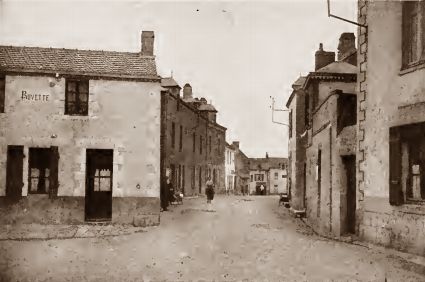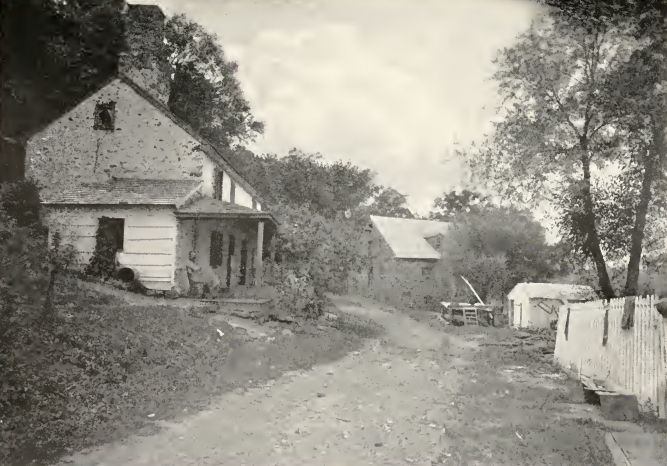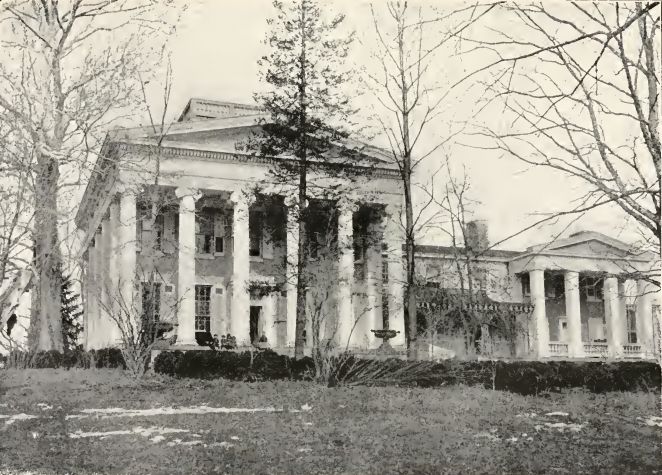Jean Audubon left his home when he was only twelve
years old. His father gave him a shirt, a suit of warm clothes, a cane and his
blessing, and told him to go into the world and make his fortune. He signed
aboard a fishing boat, sailing out of Nantes for the American shores, and by
seventeen he was an able-bodied seaman. At twenty-one he commanded a vessel, at
twenty-five he was captain and owner of his own ship and, slowly, he built up
his own fleet of fishing boats.
 |
| Coueron |
With his increasing wealth, he bought a country
estate at Couëron, near Nantes, and invested in a plantation on St Domingue
(now Haiti). Here he had two children by his quadroon housekeeper, Sanitte, and
a son by his Breton mistress, Jeanne Rabin, who was killed in a local uprising
by African slaves. Sanitte bore another child by him, a daughter, and Audubon,
in anticipation of a further slave uprising, sold off some of his holdings on
St Domingue and bought land at Mill Grove, near to Philadelphia, with the
proceeds.
 |
| Mill Grove Farm |
This was a shrewd move, as soon after the family had to flee to New
Orleans to escape the slave insurrection that began in 1789. Audubon returned
to Couëron, where he married Anne Moynet Ricordal, a widow some nine years
older than him, who had a small income of her own. He arranged for his children
to be sent to him from America, had them legally adopted in 1794, and left them
with their step-mother when he went off to fight for the French in the American
Revolutionary war.
Madame Audubon doted on her charges and positively spoiled Jean-Jacques,
the son of Rabin, determined to bring him up as a young gentleman, with fine
clothes and pockets filled with money. The boy was given free rein to indulge
his interest in natural history, and would skip school to go collecting
specimens in the countryside instead, building a collection of feathers,
pebbles, birds eggs, nests and flowers, and making crude drawings of his finds.
His father intended him to follow him into the military, and at twelve he was
sent to naval college, but suffered so much from sea-sickness that he soon
returned home. In 1803, as he approached eighteen, his father bought a false
passport for him to join him in America, thereby avoiding conscription into the
French army, and he also anglicised his name to John James.
 |
| John James Audubon |
He suffered from
yellow fever on arrival in New York and was nursed back to health by Quaker
women, who taught him to speak English. John James must have made quite an
impression on the Quaker ladies, as Mr Fisher, his father’s Quaker agent,
introduced the dashing young Frenchman to his daughter, a lady of no mean
appearance but one who engendered an unconquerable dislike in John James,
leading him to overstress his interests that the Fishers found undesirable –
playing music, dancing and hunting – thereby diminishing his allure as a
probable groom.
At Mill Grove, John was free to follow these interests to his
heart’s content and he went about collecting his nature specimens, and
conducting his experiments. He captured, and tied coloured yarns around the
legs of, local pewees, to prove that they returned to the same place after
migration, the earliest incidence of bird-ringing in American ornithological
history.
 |
| Pewee Flycatchers |
A few months later, he learned that an Englishman, Mr Bakewell, had
bought Fatland Ford, the next-door farm, and that Mr Bakewell had fine pointer
dogs and even finer daughters. Mr Bakewell left his card and an invitation to
hunt for John Audubon, but the Frenchman’s prejudice against the English
(Audubon senior had once been an English prisoner-of-war during the
revolutionary war), forced his reluctance to call on this neighbour.
 |
| Fatfield Ford Mansion |
However,
out shooting grouse one frosty morning, their paths crossed and the Frenchman
found himself charmed by the Englishman, with his genteel manners, fine
marksmanship and his excellent pointers, and promised to call upon him soon.
This he did, but Mr Bakewell happened to be out that afternoon, so John was
shown into the parlour of the Fatland mansion to await his return, and where he
was entertained by Lucy, one of the beautiful daughters. It was love at first
sight.
 |
| Miss Lucy Bakewell |
They shared the same interests, particularly a love of the outdoors, and
while Lucy helped John to improve his English, he taught her drawing. But there
was a cloud on the horizon, in the shape of one M da Costa, sent from France to
be ‘partner, tutor and monitor’ to the young master. John was far from
pleased with what he felt was da Costa’s interference but the real trouble
began when da Costa made it know that Miss Bakewell was far too far down the
social scale to be a suitable match for John.
The disgruntled John demanded a
letter of credit from da Costa to cover the cost of passage to France, received
what he thought he had requested and set out, in the midwinter weather, on the
three day walk to New York. When he arrived, he went to Kanman, the financier,
only to be told that the letter was, in fact, a suggestion that the young man
be seized and carted off to China. Infuriated with da Costa’s treachery, John
borrowed the price of the sea voyage from a friend, and sailed from the Hook,
on board the Hope, bound for Nantes.
Tomorrow – Audubon begins his great work
No comments:
Post a Comment